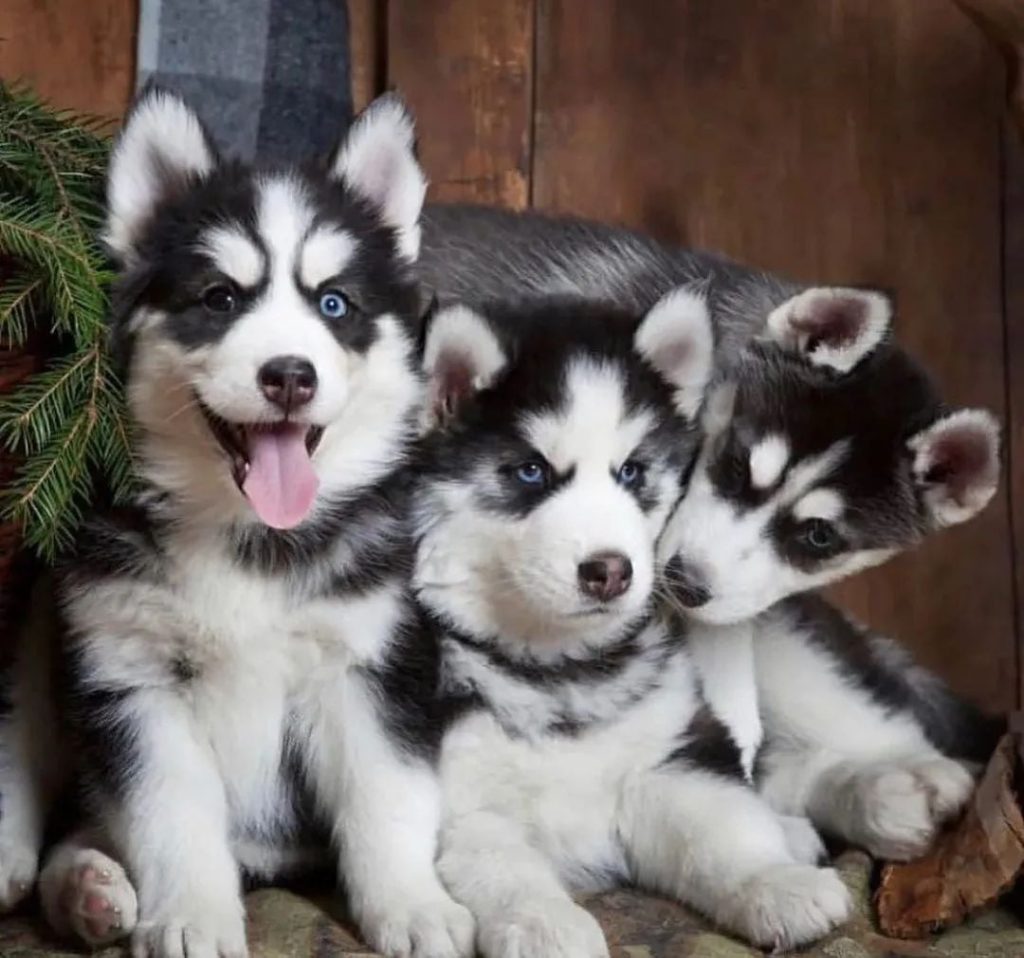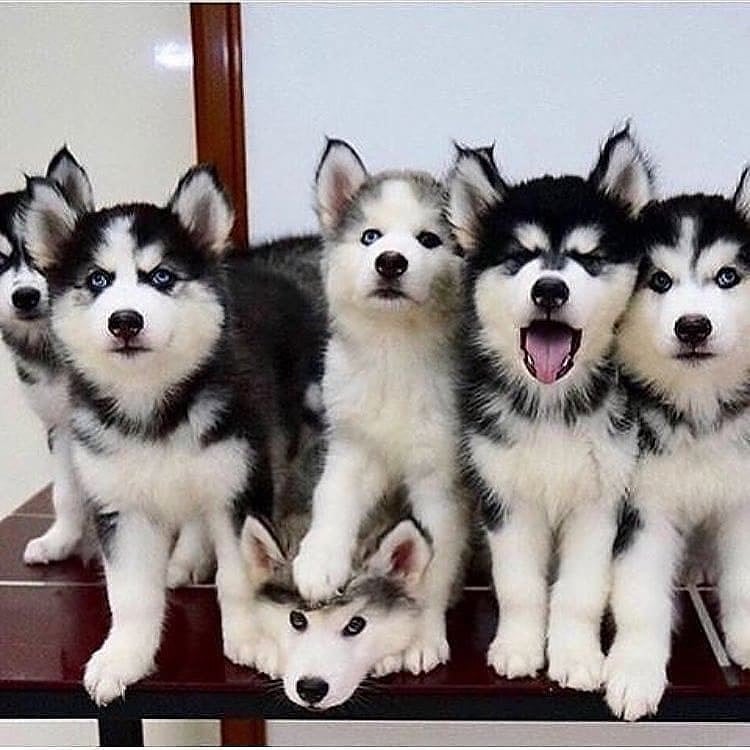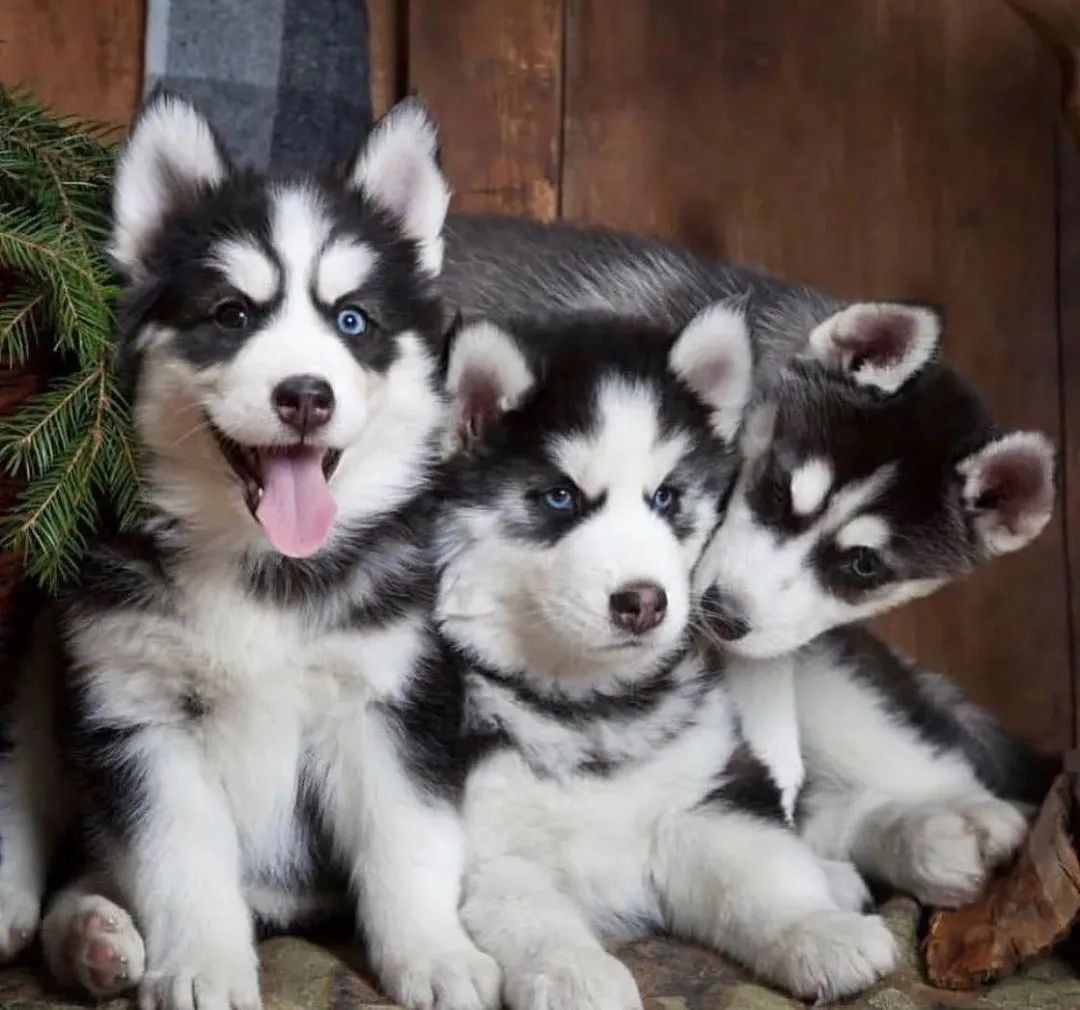Skip to content
Even from a distance, there’s no mistaking a Husky puppy when you see one. With iconic eyes that are blue or brown (or a mixture of both colours!) and the thick snow-like fur, Huskies are stunning animals. When they’re in puppyhood, however, they are still learning the ropes. Sometimes too smart for their own good, Husky puppies need plenty of activities and enjoy the family life to keep them occupied. They were born to be pack dogs, after all!
Directly related to the Alaskan Malamute, Siberian Huskies are slightly smaller in stature, but with many of the same characteristics. Unlike Alaskan Huskies, Siberian Huskies are recognised as an official breed by the UK Kennel Club. In Siberia, Huskies were used for transporting things over great distances in the Chukchi tribe. In 1909, the first Siberian Huskies were brought to Alaska as racing dogs.
Siberian Husky History
Siberian Huskies were originally bred as working dogs in the Russian region of Siberia (and are still to this day). These dogs, cultivated by the Chukchi people, indigenous Siberians, provided companionship and worked as sled dogs, hauling loads over miles of tundra in frigid temperatures. They enabled the Chukchi people to expand their hunting and gathering territories.
The Siberian Husky’s significance extended beyond Siberia when folks seeking fortune brought the breed to Alaska to pull sleds during the Gold Rush era of the late 1800s and early 1900s. At this time, they also participated in sled-dog races alongside the Alaskan Malamute and Samoyed.
The Husky’s athletic reputation is perhaps best illustrated by the 1925 “serum run,” a dog sled relay over 600 miles in less than six days to rush a lifesaving serum to Nome, Alaska, which was grappling with a diphtheria epidemic. Global newspapers showed photos of these beautiful, strong dogs, many of which were Siberian Huskies, presenting them as heroes. You might recognize the name of the lead dog: Balto. Balto was the lead dog on the final stages of the journey and is one of the most celebrated dogs of all time. He’s commemorated by a statue in New York City’s Central Park, and immortalized in the movie “Balto”, which is loosely based on the sled dog’s story.
Beyond their legendary feats, during World War II, Siberian Huskies also served in the U.S. Army’s Search and Rescue Unit in the Arctic. As a testament to their enduring appeal and capabilities, in 1930, the American Kennel Club (AKC) recognized Siberian Huskies. The Siberian Husky Club of America was formed shortly after, in 1938. Today, the Siberian Husky is a popular family pet in America.


